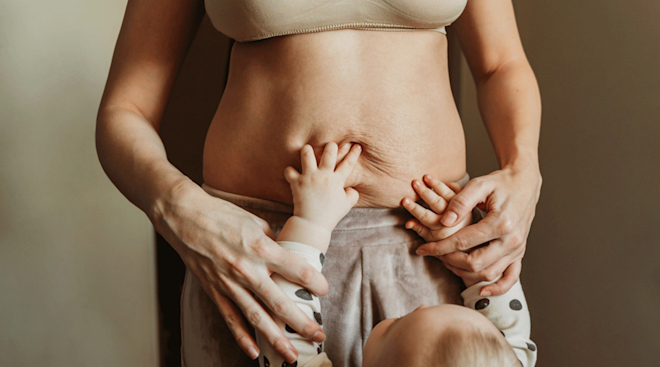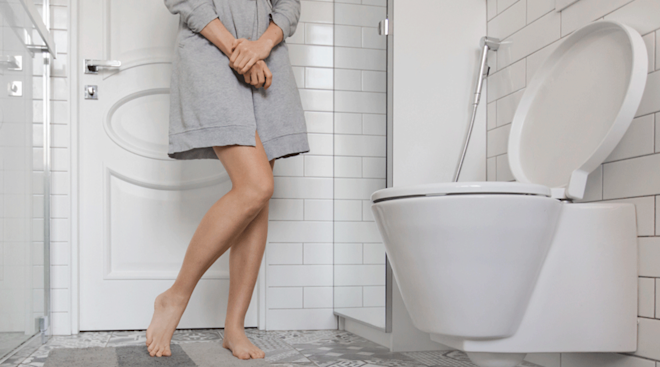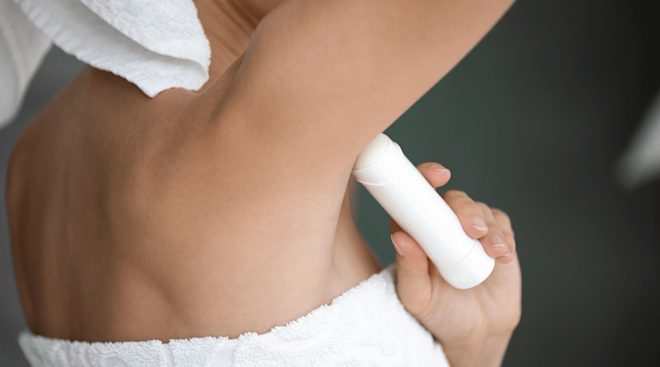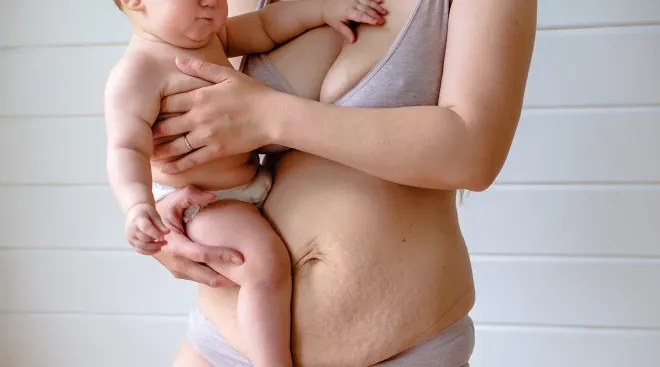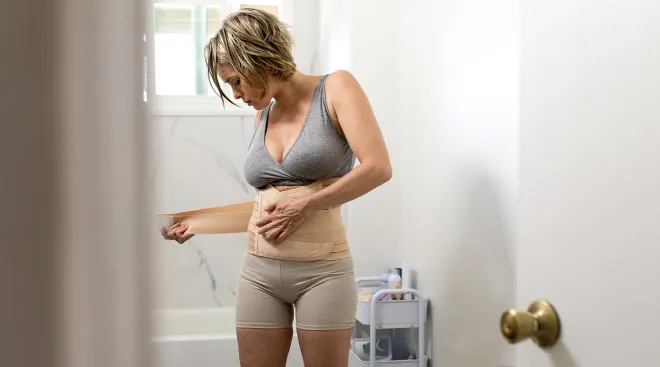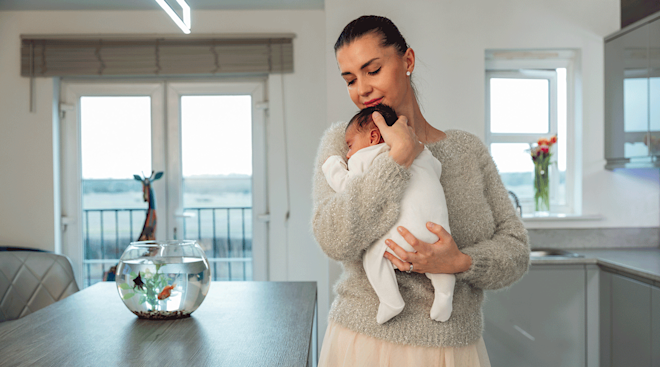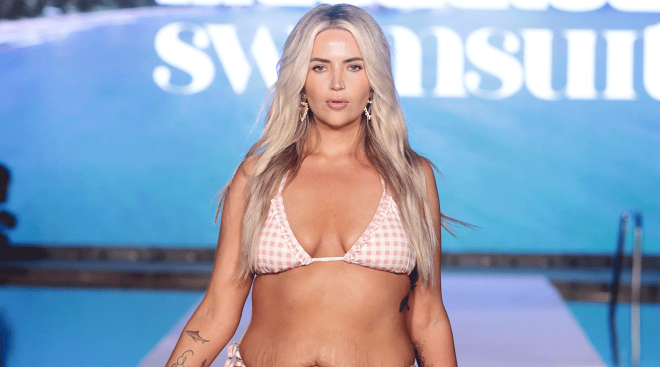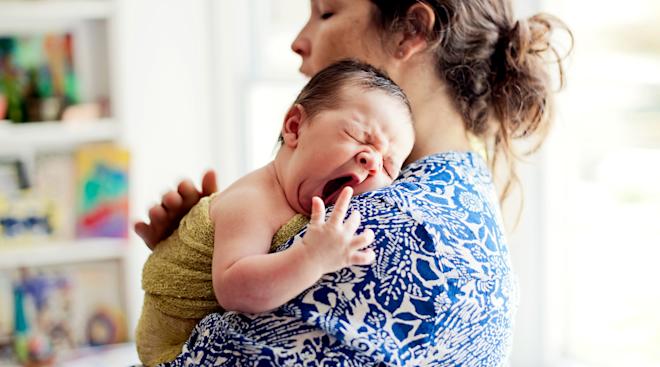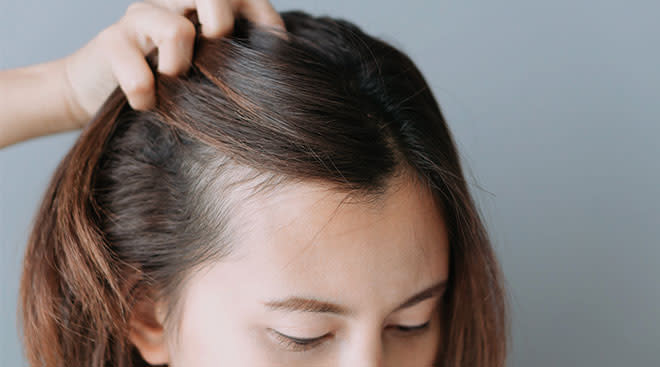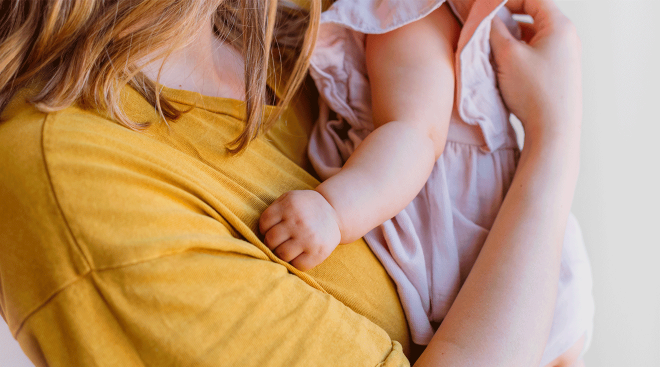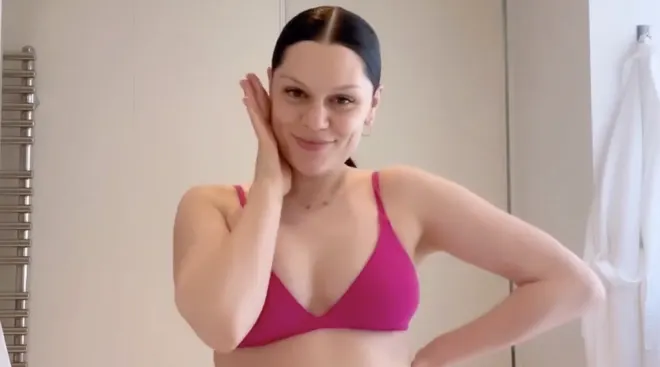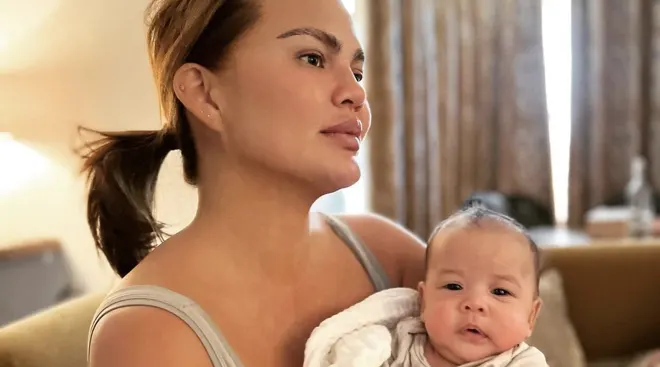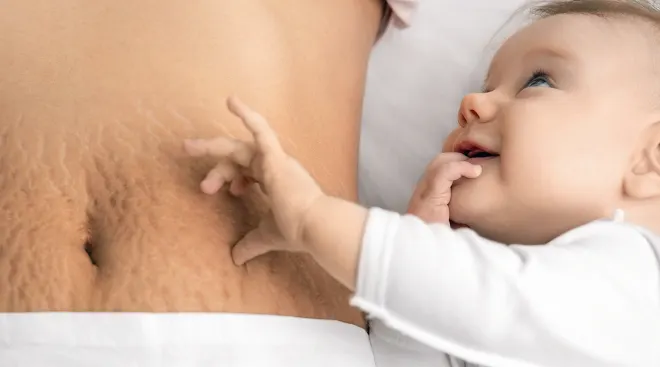What Your Postpartum Belly May Look and Feel Like After Birth
Watching your belly grow throughout pregnancy is pretty mesmerizing. It’s amazing what the body does in order to accommodate a growing baby. But at some point during those 40+ weeks, the wonderment of it all begins to wane, and you just want to have that baby in your arms—and your tummy back to its normal shape and size! The thing is: Once baby is out, your postpartum belly won’t look or feel like it did pre-pregnancy (at least, not for some time). What’s more, you may be surprised to learn that you’ll actually still look pregnant for a while. So what should you expect from your post-baby body—and what’s the typical postpartum belly progression? Read on for the lowdown.
In the immediate days following baby’s birth, your body will be doing a lot of work to recover and adjust to this sudden change. “Pregnancy generally lasts up to 40 weeks—that’s a long time,” says Aishwarya Bhagwandass, an ob-gyn for Atrium Health in Charlotte, North Carolina. “It makes sense that it’ll also take time for a woman’s body to eventually return to her pre-pregnancy [state].”
Whether you deliver vaginally or via c-section, you can expect to look down and still see a bump. But unlike your prenatal bump—which was your growing baby—your postpartum belly is the result of an expanded uterus. “During pregnancy, your uterus grows with your baby,” explains Bhagwandass. “Immediately after delivery, the uterus will still be larger than normal as the postpartum healing begins.”
In addition to a still-there bump, Bhagwandass says there are other external changes you may notice with your postpartum belly, including stretch marks, looser skin and possibly even darker skin. It may also feel a bit squishy after birth.
Of course, if you had a c-section, your postpartum belly will show an incision mark in your pubic area, which will be stitched together and bandaged up. Sinéad Dufour, PT, PhD, an associate clinical professor of rehabilitation science at McMaster University in Ontario, says the skin around your incision may feel pulled or taut. As you move through recovery, you’ll want to massage the area frequently to help alleviate this tightness.
As for what’s happening internally? You’ll likely feel a difference in your strength and function, says Dufour. “The muscles and associated connective tissue and skin that adaptively lengthen and accommodate your growing baby require time to recalibrate and reorganize back to pre-pregnancy status,” she says. Because of this, you may notice that you can’t generate as much power from your core as you could before pregnancy.
Additionally, some moms experience diastasis recti. Dufour explains that “this is when the abdominal tissues have [been excessively] strained to stretch through the pregnancy and birth process.” If this happens, your muscles will feel soft and potentially even look like they’re separated from each other. (Don’t worry, there are ways to address this separation.)
Just as your belly slowly grows to accommodate baby during pregnancy, it’ll slowly go back down to its normal size now that baby is on the outside. Postpartum belly progression varies from mom to mom. But, in general, you can expect to feel more like yourself within the first six months postpartum.
1 week postpartum belly
At one week postpartum, Bhagwandass says you can expect to look similar to how you did in the first day or so following birth. “You may still look pregnant, and that’s okay!” Even so, you can expect your belly to go down a bit, as the uterus will be more toned and firm. In fact, right after delivery the uterus weighs around 2 pounds, and by the end of the first week it’s down to around 1 pound, according to data.
2 weeks postpartum belly
You can expect to still have a bump at this point, but your postpartum belly will most likely be decreasing in size, according to Bhagwandass. Your body will also be ridding itself of a lot of fluid during this time, which may lessen some of the tummy bloating you’re experiencing.
4 weeks postpartum belly
Over the course of weeks three through five, Bhagwandass explains that the uterus will continue to shrink. “Your uterus continues to contract back down, and this also allows your abdominal muscles on each side to return closer to each other.” In other words, you might start to feel a bit stronger. Research shows that by four weeks postpartum, your thyroid function should also be back to normal, which may result in you losing some of that belly weight.
6 weeks postpartum belly
Your uterus has contracted down quite a bit, and at six weeks postpartum, Bhagwandass says that many women “feel like their bellies are now back to their pre-pregnancy shapes.” Of course, all bodies are different, and this isn’t the case for every new mom. Dufour says it can take up to 12 weeks for some women to feel this way. Regardless of where you land in this six-week stretch, you can still expect your postpartum belly to continue to feel a bit squishy, as your core muscles still need to be strengthened.
6 months postpartum belly
At this stage, your core muscles should also be significantly stronger, so your belly probably won’t feel quite as squishy as it did in those early days and weeks following baby’s birth. That said, remember that postpartum belly progression is different for every new mom. Search real postpartum belly pictures on social media, and you’ll see women of all shapes and sizes. And if you had multiples? Well, you can expect your postpartum twin belly to take even longer to go down.
It’s easy to get so hyper-focused on your postpartum belly that you can lose sight of how incredible your body is. After all, you just carried, nourished and delivered a small human. That’s no small feat; it’ll take a while to recover, so don’t rush the process. That said, you can appreciate what your body did and also want to lose your postpartum belly. Fortunately, there are some small lifestyle steps you can take to help this process along. Here are a few things to try:
Low-intensity exercise
Exercise is an essential step to living a healthy, balanced life. But you’ll need to be gentle with yourself, and stay away from intense workouts at first. In fact, before getting started, Bhagwandass advises checking in with your ob-gyn or midwife at your postpartum visit. This checkup takes place about four to eight weeks after delivery; it gives your doctor time to evaluate your history and perform a physical exam. If you get the green light to begin exercising, start slow and steady with some simple, low-intensity routines. Here are some ways to get moving:
- Practice deep breathing and good posture. Deep breathing and good posture are always good for you. After childbirth, these simple steps can work toward strengthening your core. “The best way to help the belly restore optimally is engaging the ‘deep’ core muscles,” says Dufour. These include the breathing diaphragm, pelvic floor and the transversus abdominis muscles (aka your inner corset muscle). To do this, Dufour suggests standing in a way that keeps your back straight with your ribs over the pelvis. This posture sets the body up for “tension-free intentional breathing into the diaphragm.” Picture yourself breathing into your side ribs to really activate your deep core muscles.
- Take a walk. It may feel like anyone and everyone tells you to go on walks with baby. But there’s a reason for that: Getting out of the house and taking a slow stroll has physical and mental health benefits. One of these pros is strengthening your core and shrinking your postpartum belly. Dufour suggests taking easy walks “as early as possible” after delivering baby. While walking, make sure you’re engaging your core by maintaining good posture and breathing deep. “Never underestimate the power of breathing and walking as global postpartum recovery strategies that help your belly, pelvic floor and more,” says Dufour.
- Start slow with core strengthening. Strengthening your core is going to be key in losing your postpartum belly. In general, try to avoid intense core routines, such as planks or sit-ups, during the first four months of the postpartum period, as research shows it’s associated with significant deterioration of muscle function. A good gentle core exercise to try is heel slides; lay on your back in a neutral position with your knees bent, then gently straighten one leg (dragging your heel across the floor as you go) before bringing it back to a bent position (dragging your heel across the floor again).
Talk to your doctor before starting any new exercise regimen, and be sure to listen to your body and know your limits—after all, you’re still recovering.
Use compression support
If you had a lot of swelling during pregnancy, you might have worn compression socks to help. Well, compression is also useful during the postpartum stage; it can provide a little extra support to your core as your belly starts to shrink. “Using an external support in the postpartum period can assist with recovery and improve comfort,” says Dufour. That said, she stresses that it’s important not to get anything that’s too tight, such as corset-style compression.
Work on your pelvic floor
You’ve probably heard a lot about your pelvic floor since you first got pregnant. But did you know that it’s connected to your core strength? According to Dufour, another way to help strengthen your core and get rid of your postpartum belly is by practicing pelvic floor exercises, such as kegels. She recommends talking to your doctor for tips. If necessary, they can refer you for pelvic floor therapy.
Becoming a parent changes everything about you—and your body is no exception. It’ll take a while for your postpartum belly to go down. But even if you’re eager to feel like yourself again, don’t forget to appreciate the amazing things you accomplished. You created and cared for a tiny being in that belly of yours—and that is something worth celebrating.
About the experts:
Aishwarya Bhagwandass, MD, is an ob-gyn with Atrium Health at Women’s Care at Eastover University in Charlotte, North Carolina. She earned her medical degree from the Medical College of Georgia, and completed her residency at Carolinas Medical Center.
Sinéad Dufour, PT, PhD, is an associate clinical professor of rehabilitation science at McMaster University and a member of the Lansinoh clinical advisory network. She earned her MScPT and completed a postdoctoral fellowship at McMaster University in Hamilton, Ontario, and her PhD in health and rehabilitation science from Western University in London Ontario.
Please note: The Bump and the materials and information it contains are not intended to, and do not constitute, medical or other health advice or diagnosis and should not be used as such. You should always consult with a qualified physician or health professional about your specific circumstances.
Plus, more from The Bump:
Navigate forward to interact with the calendar and select a date. Press the question mark key to get the keyboard shortcuts for changing dates.


































